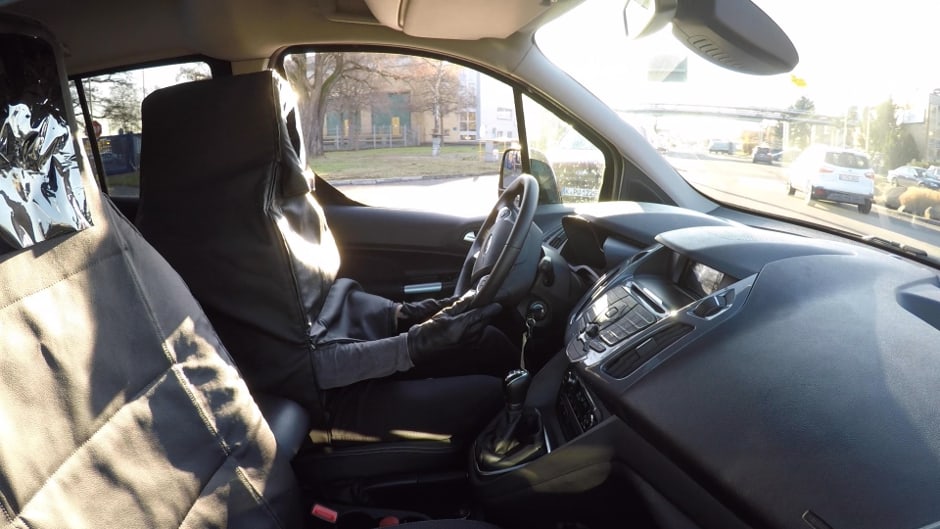This week’s video comes from Germany where Ford is using a so-called Human Car Seat to investigate the relationship between on-road autonomous vehicles, pedestrians and cyclists.

Drivers and other road users often communicate non-verbally as a way of signalling their intent.
These informal exchanges take many forms and help ensure safety, but what will happen when autonomous vehicles become more prevalent, rendering this form of communication obsolete?
Ford said it has been testing one approach that uses lights to indicate what the vehicle is doing and what it will do next as part of research into a communication interface that will help autonomous vehicles integrate with other road users.
To this end, the company created the Human Car Seat and put it inside a Transit Connect van. By concealing the driver in the seat, the vehicle would appear to be driving itself. This deception would help observers gauge responses to a roof-mounted light bar that flashed white, purple and turquoise to indicate when the van was driving, about to pull forwards and giving way.
https://www.youtube.com/watch?v=KqQyYOPPn7w
“Fundamentally, people need to trust autonomous vehicles and developing one universal visual means of communication is a key to that. Turning someone into a Human Car Seat was one of those ideas when there was a bit of a pause and then the realisation that this was absolutely the best and most effective way of finding out what we needed to know,” said Thorsten Warwel, Ford of Europe core lighting manager.
According to Ford, the tests concluded that 60 per cent of 173 people surveyed after encountering the Transit Connect thought it was an autonomous vehicle. Together with the observed reactions of a further 1,600 people, turquoise – more noticeable than white and less easily confused with red than purple – was the preferred colour. There was also a high level of acceptance and trust in the signals, providing a basis from which researchers can further develop the visual language.
In case you’re wondering, Ford said trained Human Car Seat drivers kept their eyes on the road through a false head rest and operated a special lever to indicate. An assistant, hidden in the back, also monitored the road as back-up.





Nanogenerator consumes CO2 to generate electricity
Nice to see my my views being backed up by no less a figure than Sabine Hossenfelder https://youtu.be/QoJzs4fA4fo